Investigation of the midgut structure and ultrastructure in Cimex lectularius and Cimex pipistrelli (Hemiptera: Cimicidae)
- PMID: 27553718
- PMCID: PMC5243908
- DOI: 10.1007/s13744-016-0430-x
Investigation of the midgut structure and ultrastructure in Cimex lectularius and Cimex pipistrelli (Hemiptera: Cimicidae)
Abstract
Cimicidae are temporary ectoparasites, which means that they cannot obtain food continuously. Both Cimex species examined here, Cimex lectularius (Linnaeus 1758) and Cimex pipistrelli (Jenyns 1839), can feed on a non-natal host, C. lectularius from humans on bats, C. pipistrelli on humans, but never naturally. The midgut of C. lectularius and C. pipistrelli is composed of three distinct regions-the anterior midgut (AMG), which has a sack-like shape, the long tube-shaped middle midgut (MMG), and the posterior midgut (PMG). The different ultrastructures of the AMG, MMG, and PMG in both of the species examined suggest that these regions must fulfill different functions in the digestive system. Ultrastructural analysis showed that the AMG fulfills the role of storing food and synthesizing and secreting enzymes, while the MMG is the main organ for the synthesis of enzymes, secretion, and the storage of the reserve material. Additionally, both regions, the AMG and MMG, are involved in water absorption in the digestive system of both Cimex species. The PMG is the part of the midgut in which spherites accumulate. The results of our studies confirm the suggestion of former authors that the structure of the digestive tract of insects is not attributed solely to diet but to the basic adaptation of an ancestor.
Keywords: Midgut epithelium; alimentary tract; digestive cells; secretory cells.
Figures
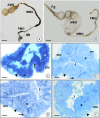

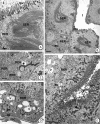
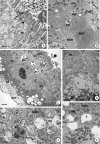
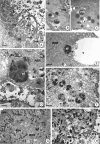
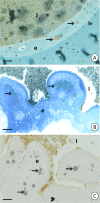


References
-
- Balvín O, Kratochvíl L, Vilímová J. Batbugs (Cimex pipistrelli group, Heteroptera: Cimicidae) are morphologically, but not genetically differentiated among bat hosts. J Zool Syst Evol Res. 2013;51:287–295. doi: 10.1111/jse.12000. - DOI
-
- Balvín O, Bartonička T, Simov N, Paunović M, Vilímová J. Distribution and host relations of species of the genus Cimex on bats in Europe. Folia Zool. 2014;63:281–289.
-
- Bandani AR, Kazzazi M, Allahyari M. Gut pH and isolation and characterization of digestive α-D-glucosidase of sunn pest. J Agric Sci Technol. 2010;12:265–274.
MeSH terms
LinkOut - more resources
Full Text Sources
Other Literature Sources
Medical

